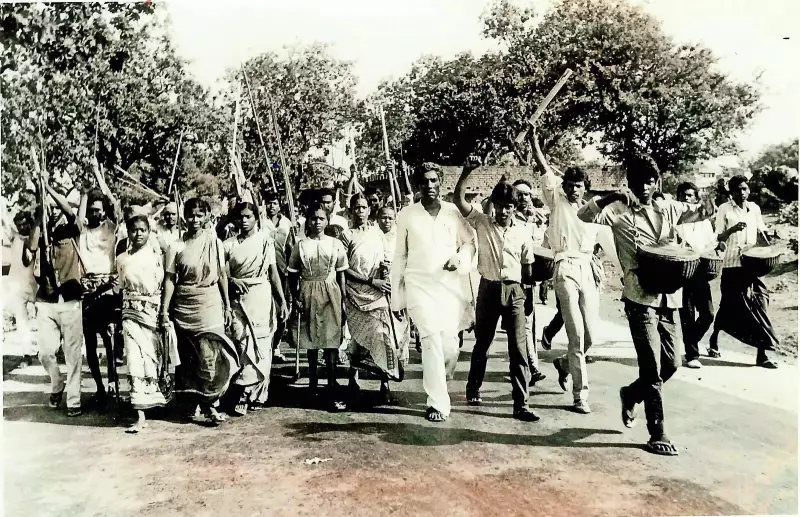
This Saturday marks a significant milestone for Jharkhand as the state prepares to celebrate its 25th formation day. However, the journey to statehood spans over a century, reflecting an extraordinary tale of resilience and persistent pursuit of autonomy and cultural identity under the Indian Constitution.
The Early Foundations of Resistance
The movement for Jharkhand's creation wasn't merely a political struggle but a profound fight for recognition and self-determination by indigenous communities. Countless lives were sacrificed during this prolonged battle that echoes through the hills and valleys of the region even today.
While various indigenous groups continuously waged wars for autonomy, the year 1915 marked a crucial turning point in the statehood movement. According to Sanjay Basu Mallick, a participant in the statehood movement since the 1980s, this period witnessed educated Christian tribals uniting to form the Chhotanagpur Unnati Samaj (CUS) specifically to demand autonomy or a separate region.
Basu recalled how a CUS delegation submitted a memorandum for a separate region to the Simon Commission in 1928. However, the formal consolidation of various statehood efforts only materialized in 1938 when disparate Adivasi and indigenous groups united for the first time to establish the Adivasi Mahasabha.
The Rise of Tribal Leadership
The movement found its charismatic leader in Marang Gomke Jaipal Singh Munda, a prolific hockey player and tribal statesman who returned from London to spearhead the struggle. Santosh Kiro, an academician and author of books on Jaipal Singh Munda, described how the statehood movement experienced numerous twists and turns, with both violent protests and satyagraha movements producing several leaders who guided the cause through different phases.
Kiro highlighted that around 1938-39, the Adivasi Mahasabha organized its first major meeting where scores of tribals gathered at Ranchi's Hindpiri area, marking a transition toward more organized activism. This eventually led to the movement taking a distinct political shape.
According to Basu, this political evolution resulted in the formation of the Jharkhand Party during 1949-50, which continued the statehood battle through electoral politics. Despite the party winning considerable seats in elections, the demand for a separate state remained unfulfilled.
Political Mergers and Renewed Resistance
In 1955, the Jharkhand Party submitted a memorandum to the States Reorganisation Commission, but suffered a significant setback. By 1963, after facing repeated rejections, the Jaipal Singh-led Jharkhand Party merged with Congress, creating fragmentation within the movement.
Kiro explained that this merger prompted breakaway factions to continue their struggle, with leaders like Annie Horo playing crucial roles in reviving the movement. Simultaneously, the early 1970s witnessed activists including Binod Bihari Mahato, A K Roy, and Shibu Soren uniting their separate efforts to form the Jharkhand Mukti Morcha (JMM), injecting new energy into the movement.
From this point, Shibu Soren, who had previously focused on fighting against Mahajani pratha (landlord exploitation), rose to prominence and became a central figure in the statehood movement. The subsequent birth of the All Jharkhand Students Union (AJSU), considered JMM's youth wing, brought militant strategies inspired by Manipur's activist groups, employing violent methods to force the Union government to acknowledge their demand for a separate state.
Cultural Awakening and Final Achievement
Alongside political and violent attempts, a parallel crusade for cultural awakening emerged under the leadership of the late Ramdayal Munda. During the 1980s, Munda and other artists and intellectuals formed the Jharkhand Coordination Committee, expanding the statehood fight beyond electoral politics to include safeguarding cultural identity and combating economic repression of tribals and marginalized communities.
Years of sustained efforts finally compelled the Centre to acknowledge the demand, leading to the formation of Jharkhand on November 15, 2000 under the government of late Prime Minister Atal Bihari Vajpayee. Jharkhand emerged alongside Chhattisgarh and Uttarakhand during the same period, though the state faced numerous challenges that hindered its progress compared to its counterparts.
Policy paralysis and unstable governments until 2014 derailed Jharkhand's development. The state only achieved its first stable government in 2014, marking a new chapter in its governance.
Speaking to media earlier this week, Chief Minister Hemant Soren affirmed his government's commitment to elevating the state to new heights. He appealed to youth to contribute collectively toward building 'Hamar Sona Jharkhand', emphasizing that the time has arrived to create a state filled with potential and opportunities, leveraging the talent, dedication, creativity, and education of Jharkhand's younger generation.





